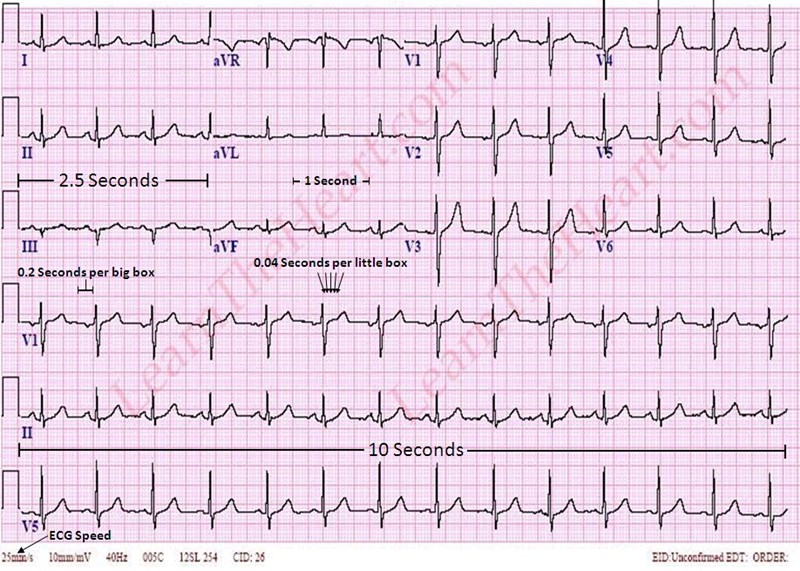ECG Basics
Approach to ECG Interpretation
When looking at a 12-lead ECG, a few logistics must be understood.
First, the standard 12-lead ECG is a 10-second strip. The bottom one or two lines will be a full “rhythm strip” of a specific lead, spanning the whole 10 seconds of the ECG. Other leads will span only about 2.5 seconds.
Each ECG is divided by large boxes and small boxes to help measure times and distances. Each large box represents 0.20 seconds, and there are five small boxes in each large box, thus each small box is equivalent to 0.04 seconds. The image below depicts each of these.
If the entire ECG is 10 seconds, then there must be 50 large boxes (0.20 seconds times 50 large boxes). Each small box is also exactly 1 mm in length; therefore, one large box is 5 mm.
In general, when measuring amplitudes of waves or complexes, the units are expressed in mm, and when measuring lengths for intervals, the units are expressed in seconds or milliseconds (ms).
If each small box is equal to 0.04 seconds or 1 mm, then the standard ECG speed is 1 mm per 0.04 seconds, or 25 mm per second.
The standard approach to reading an ECG includes, in this order:
- Examining the rate
- Examining the rhythm
- Examining the axis, intervals and segments
- Examining everything else

